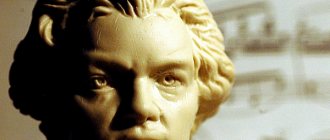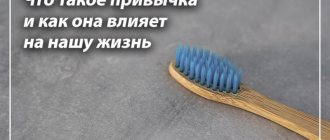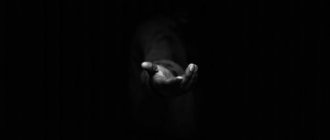What is a habit? This word comes from the English “habit”. Translated, it means an automatically established type of certain behavior.
What is a habit in its essence? This is a kind of program that is embedded in a person and works at the subconscious level. The saying goes that habit is second nature. And there is an explanation for this. Think about it, because the vast majority of actions are performed automatically by us. In other words, out of habit. The same action that a person repeats every day is internalized by him and goes into the control of the subconscious. At the same time, consciousness is freed from control over it.
a brief description of
An example of a professional habit is the action of a mechanic who wipes down his machine every day after work. In the domestic sphere, this means washing hands before eating. Social habits are a certain social structure that is accepted in a given society. However, they are a cultural norm. Individual habits, that is, those that belong to someone personally, serve as a certain reserve for social ones. They will change their category if they are noticed by society and are in demand in it. For example, business acumen and initiative were punishable in earlier times. Nowadays it has become very revered, entering the category of the social self. There are many examples of this. Thus, an enterprising person is considered a socially richer person.
Individual habits are conventionally divided into harmful and useful. Some people have harmful behavior patterns. They smoke and throw things all over the apartment, have dinner in front of the television screen and like to procrastinate. This is a broad topic. Bad habits are not beneficial from the standpoint of public good. They are harmful to the health of the person himself, and sometimes to those around him.
What is a good habit? This means, for example, going to bed on time, getting up early, caring for others and living with a feeling of love.
As a rule, habits appear at a certain period. However, a variety of such subconscious actions can also include various states or reactions that arise instantly.
What is a physical habit? This, for example, is the tendency to bite your nails or crack your fingers. An example of emotional automatic actions would be calling a young man, although consciousness tells him that this should not be done. Taking the same route to school or work is considered a behavioral habit.
Meaning in human life
Today is characterized by frantic rhythms and endless cycles of events. In order for a modern person to adapt to the ever-increasing dynamics of everyday life, habits are needed. Only lazy people have not tried to somehow control their automatic actions. Man is biosocial. And the social component has a great influence on what skills and habits he develops. If there is a need to adapt to the environment, then the mind will find how to do it. Thus, a new habit appears. In other words, surrounding circumstances dictate certain conditions of behavior and force the development of automatic skills.
What is a habit in a person's life? This is one of the most important characteristics of his personality. And there is an explanation for this. Habits make up character, which in turn influences destiny. Automatic actions that are performed by a person at the subconscious level can be both his friends and enemies. That is why everyone should monitor their habits very carefully. The bad ones, unfortunately, stick themselves. Good ones appear only under certain conditions.
Acquired behavior
From performing the same actions over and over again, a certain program is recorded in a person’s mind, which is “launched” when the appropriate situation arises. Simply put, people form habits through repeated repetition of certain techniques. It is this psychological phenomenon that will be discussed later in the article.
Below you can find out what habits are, how they are acquired and whether it is possible to get rid of them. And further it will be described in detail how to begin to change your life for the better by developing positive skills.
Formation conditions
In order for a person to develop a habit, the first thing you need to do is attract attention, “hook” him, and then interest him. This creates confidence and a feeling that he can do it. It is worth remembering that weaning a person from addictions is considered an unpromising activity. The task in this case should be formulated differently. This should not be a fight against bad skills, but the development of new, useful ones.
A person must understand the meaning of a useful habit. At the same time, new automatic actions should fit well into his lifestyle, and also be supported by loved ones. If a person is attentive to himself, he will not allow him to develop bad habits.
The benefits and harms of habits
The benefits of habits are obvious. If we constantly had to deal with something new, our consciousness would not be able to withstand such a load. Therefore, it is definitely useful and hardly requires revision to the habit of turning off the light when leaving the room, washing your hands after visiting the toilet, or doing ten squats every day. But you need to take a closer look at some of your habits.
We will talk about seemingly completely harmless customs that do not harm anyone: going to work the same way, visiting the same stores, watching TV series on weekends.
By getting used to it, we become predictable and do not develop. A fear of change appears, and a person refuses it, even to the detriment of his interests. He may remain in an unpromising job with a tyrant boss until the end simply because he is used to it and is afraid to change something. And the helpful brain will come up with a thousand reasons to leave everything as it is.
People are manipulated using their habits. This tactic is especially often used in sales. For example, when a store opens, customers are lured with low prices, a profitable bonus system or gifts. After people get used to visiting a retail outlet, prices gradually increase, and bonuses become not so profitable. Of course, some consumers will see through the trick and leave to look for other places, but some will remain as regular customers.
You can't become a slave to your habits! You should learn to use them for your benefit and make those things automatic that are not worth the extra effort. And you should get rid of useless restrictions that hinder development, replacing them with good ones.
Reasons for appearance
Bad habits in children can arise from the child’s unconscious desire to imitate someone. That is why people close to the child should carefully monitor their actions. This will not give your beloved child a reason to copy nail biting or nose picking of an adult.
Child psychologists explain another reason why children develop bad habits. It lies in the lack of attention to the child, which he feels in his family. For example, the baby is left alone for a long time, weaned early, and rarely picked up. At the same time, the child is bored, uncomfortable and even scared. The baby must somehow calm down. As compensation and reassurance, he fiddles with his ear, sucks his finger, or picks his belly button. With such ritual actions, the child gets used to calming himself. Gradually everything turns into bad habits. And if these actions are immediately comforting in mother’s absence, then later they become interesting to him even if the parents are nearby.
Psychology
Chapter X
Habit
Its importance in psychology. It remains for us to consider such an important general condition of nervous activity that we should devote a special chapter to it. We are talking about the ability of the nerve centers, especially the hemispheres, to acquire habits. From a physiological point of view, an acquired habit is nothing more than the formation in the brain of a new discharge path along which the known bringing nerve currents always tend to subsequently leave. This proposition is the main theme of this chapter; in further chapters, with a predominance of psychological content, we will see that such mental functions as associations, ideas, perception, memory, thinking, education of the will, etc., can best be explained as the results of the formation of precisely new discharge paths.
The basis of habit is a physical law. If we try to define what a habit is, we will see that it represents something related to the fundamental properties of matter. The laws of nature are nothing more than unchangeable habits that are followed, influencing each other, by various basic types of matter. However, in the organized world, habits are much more diverse. Even instincts manifest themselves in different individuals in different forms and, as we will see below, change in the same individual in individual cases. <…> When some change has occurred in the structure of the body, the previous inertia of the body becomes a condition for its relative constancy in the new form, and then the body begins to exhibit new habits. Consequently, the plasticity of a body in the broad sense of the word should be understood as having a structure that is susceptible to the influence of external causes, but not immediately susceptible to this influence. In a body of this structure, each relatively yielding phase of equilibrium is characterized by what we call a new set of habits. Organic matter, especially nervous tissue, seems to be endowed to a strong degree with this kind of plasticity, so that we may not hesitate to put forward the following as the first proposition: the phenomena of habit in animate beings are due to the plasticity of the organic substances that make up their bodies.
So, the philosophical analysis of habit at first represents a department of physics rather than physiology or psychology. All the most eminent students of this question agree that the basis of habit is a physical law. Some of them draw an analogy between acquired habits and certain properties of unorganized matter. Here is what DuPont writes about this:
“Everyone knows that a worn dress fits closer to the body than when it is brand new: from wear, changes have occurred in the fabric that have formed a new “habit” of adhesion. A new lock works worse than a used one: a new one requires some effort to overcome some of the roughness of the mechanism. This overcoming of resistance is habituation. It is easier to fold a piece of paper that has already been folded. In exactly the same way, in the nervous system, impressions from external objects create more and more convenient paths for themselves, and these vital processes, having been interrupted for some time, arise again as soon as similar external stimuli are present.”
But this is not observed only in the nervous system. A scar anywhere represents a locus minoris resistentiae (place of least resistance), it is more likely to be rubbed, it becomes inflamed, and is more sensitive to cold and heat than neighboring parts of the skin. Once an arm or ankle is sprained there is always a risk of being sprained again; the ligaments which have once been affected by rheumatism or gout, the mucous membrane which was once the seat of catarrhal suffering, become more and more susceptible to the painful process, until finally the painful condition becomes chronic.
It is well known how many so-called functional disorders in the nervous system seem to take root more and more simply because they have once arisen, and how often the energetic measures taken by the doctor against the first attacks of the disease are sufficient to give the physiological processes sufficient strength to restore normal organ functions. This happens with epilepsy, neuralgia, all kinds of convulsive seizures, insomnia, etc.
In the establishment of habits, one can clearly see the difference between indifferently observing the increasing harmful inclinations and successfully treating the victims of harmful hobbies. Treatment carried out by weaning shows the extent to which painful phenomena were caused by simple inertia of the nervous organs, after the functions began to function incorrectly.
Habits are caused by the formation of pathways through nerve centers. If habits are determined by plasticity, the receptivity of the nervous substance to external impressions, then it is easy to determine what these impressions should be. The nervous system is not susceptible to mechanical pressure, temperature changes, or any forces acting on other organs of the body, because nature has so wrapped and covered the brain on all sides with membranes that it is affected only by the flow of blood and impressions perceived by the endings of sensory nerves; through the latter, an infinite number of extremely weak currents penetrate into the brain, to which the hemispheres are especially sensitive. The nervous current, having penetrated the brain, seeks a way out and leaves a trace along its path. In short, nerve currents can only deepen old paths or pave new ones, and the plasticity of the brain is expressed only in the fact that it is an organ in which currents, penetrating from the senses, with extreme ease leave traces that do not erase for a long time. For, of course, a simple habit, like any other nervous process, for example the habit of speaking through the nose, or putting hands in pockets, or biting nails, as an automatic act is nothing more than a reflex discharge, the anatomical substrate of which is a certain path in nervous system.
Below we will be able to see that the most complex habits, from this point of view, are a simple chain of discharges in the nerve centers, a chain formed due to the existence in them of a system of reflex pathways, which are so arranged that the reflex is sequentially transmitted from one path to another, and the impression caused by one muscle contraction serves as a stimulus for another contraction, until finally the last impression completes the circuit.
It should be noted that changes in the structure of living matter occur more quickly than in the structure of unorganized matter, because the constant renewal of matter during nutrition, replacing the old tissue with the perceived impressions with a new one, rather contributes to the consolidation of the changes perceived by the brain than counteracts them. For example, after exercising our muscles or brain in some new direction, we feel unable to continue in the same direction, but after a day or two, having again taken up unusual work, we are often surprised at our own successes.
While memorizing melodies, I often observed this psychic phenomenon in myself; it prompted one German author to say that in winter we learn to swim, and in summer we learn to skate.
The practical meaning of habit. Firstly, habit simplifies our movements, makes them more precise and reduces the fatigue they cause. From birth, a person strives to perform a number of actions for which he does not have enough ready-made devices in his nerve centers. In other animals, most actions are automatic from birth. But an adult has such a mass of automatic devices that the bulk of them had to be developed through hard work. If our actions did not improve as a result of exercise, and habit did not reduce the expenditure of nervous and muscular energy, then the situation of man would be very sad. Here's what Maudsley says about this:
“If actions did not become easier when repeated, if each repetition of the same action required careful guidance of consciousness again and again, then, obviously, no progress in development would be possible and all our everyday activities would be limited to one or two acts.
Under such conditions, a person could dress and undress for whole days, concentrating all his attention and energy on the toilet; It would be as difficult for him to wash his hands or fasten a button in each individual case as it is difficult for a child to do it for the first time. In the end he would be exhausted by a series of futile attempts. Think about the difficulty with which a child is taught to stand on his feet, about the efforts that he has to make for this at first, and about the ease with which he can then stand without feeling any effort. For, while secondary automatic acts are accompanied by relatively little fatigue, in this respect approaching organic or primarily automatic movements, conscious efforts of will quickly tire us. The spinal cord... without memory would be the spinal cord of an idiot. It becomes clear to a person how much he owes to the automatic activity of the body only when illness undermines the functions of the latter” (“The Physiology of Mind”).
Habit reduces the conscious attention with which our actions are performed. This can be schematically represented as follows: if to perform an action you need a sequential series of nervous processes - A, B, C, D, E, F
etc., then, when performing such an action for the first time, the conscious will must select each element of this action from a certain number of unsuitable alternatives that present itself to it;
but upon repeated action, habit causes each element in the series to invariably call forth the next one after it, without the appearance of alternatives from which the conscious will would make a choice, until at last, on each appearance of element A
, the rest of the series of elements will immediately follow in an unchangeable order, as if they represent one continuous change.
When learning to walk, ride a horse, swim, skate, write, play a musical instrument, or sing, at every step we delay our work with a mass of unnecessary movements or false notes. On the contrary, a person who is proficient in some art achieves his goal with the least amount of muscle effort; movements follow one after another, obeying an instant impulse. A well-aimed shooter takes aim and shoots the bird before he can fully identify it. A quick glance from the enemy and one blow from his rapier is enough for the fencer to instantly parry the blow and deliver a new one. The pianist glances at the musical hieroglyphs - and instantly streams of sounds begin to flow from under his fingers.
At the same time, thanks to habit, over time, inappropriate actions, as well as expedient ones, become involuntary. Who hasn’t happened to take off his vest during the day and then start winding his watch out of habit of winding it every evening after undressing before going to bed; or, approaching the front door of a friend’s apartment, take your key out of your pocket? It happened that persons who went into the bedroom to change clothes for dinner, according to English custom, absent-mindedly undressed and went to bed only because the first movements when undressing at a later hour led to such a result.
We all have a certain manner of performing our daily toilet, opening and closing well-known drawers in the closet, etc., but our higher centers of thought take almost no part in these processes. Few people are able to say which sock or shoe they start putting on. To answer this, they must mentally imagine the process of putting on their shoes, but sometimes this is not enough and they have to repeat the act of putting on their shoes. I cannot answer the questions of which half of your shutters opens first or in which direction your door opens, but my hand, opening them, will never be mistaken. No one is able to describe the order in which he combs his hair or brushes his teeth, and yet it is very likely that the sequence of these actions is quite constant for each of us.
End of introductory fragment.
Fighting methods
It is worth saying that by prohibiting a child from doing something, it is impossible to achieve a positive result.
Punishment will not help here either. Getting rid of bad habits is not easy. Parents must be patient to convince their child that there are a lot of germs and dirt under the nails that get into his mouth if he bites his nails. Little children can be told a fairy tale about the little brothers. A girl should be taught that women’s hands should be well-groomed and beautiful. There is no point in scolding a child who sucks his thumb. He should be distracted with interesting games and activities. You can simply cuddle the baby. Be that as it may, the basis of all bad childhood habits are problems of a psychological nature. Fighting them means eliminating the child’s uncertainty and anxiety. At the same time, it is important that the atmosphere in the house is peaceful and friendly, then any adversity will be overcome.
Habit Loop
To know how to influence habits, you need to understand how they work and what triggers the behavior. This pattern is called the habit loop.
The first element in the chain is the trigger. This is a circumstance that causes an automatic reaction on our part. It can be both internal and external. For example, the first include the feeling of hunger or one’s own experiences. External ones include the environment (a colleague invited me to smoke) and aspects of the external environment (I’m cold - I want tea).
The trigger leads to the formation of a dominant, i.e. a need that is impossible or difficult to ignore. To satisfy this need, it is necessary to perform a mental, physical or emotional action. The brain chooses the method of implementation based on the experience and knowledge already at its disposal.
At the end we receive a reward in the form of a positive emotional reaction. Reinforcement with a positive reaction gives the brain a signal that it would be nice to remember this scheme and practice it further.
If you look at a habit from the point of view of a loop, it turns out that until you begin to consciously fight the learned behavior program, you should not expect changes. The brain will play a well-known record as soon as you are exposed to the appropriate trigger.










